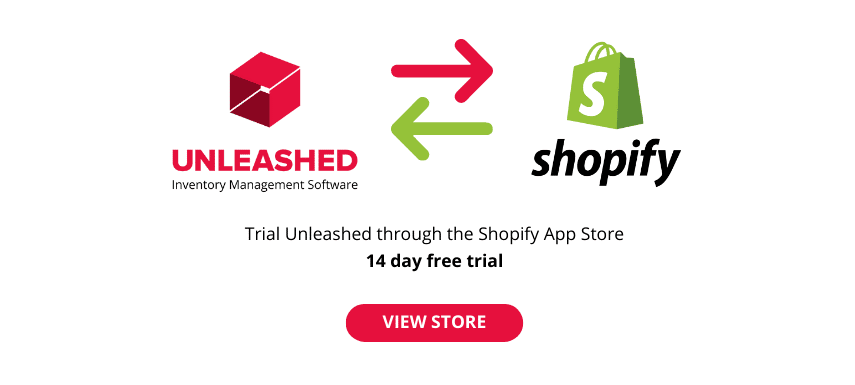
Direct-to-consumer (D2C) eCommerce has exploded, as start-ups and traditional outlets alike flock to the efficient, cost-effective sales strategy.
Amid the pandemic-fuelled rise in digital sales, customers are increasingly looking to cut out middlemen and deal directly with a manufacturer.
The rise of D2C has been accelerated by the Covid pandemic, as customers have turned to eCommerce and looked for ways to save. Disruptors and start-ups across many industries have looked to meet that need, developing business models which reflect this new world.
Indeed, customers’ growing demands for D2C mean it is estimated to surpass US$150 billion in 2022, an increase of nearly 17% on 2021.
However, there are very real challenges in setting up a D2C channel, and it can be an overwhelming concept for many businesses to develop. This article considers how D2C works, who does it, some D2C pros and cons – and whether it is good idea for small and medium businesses.
What is D2C eCommerce (& and who does it)?
D2C eCommerce is a transaction in which sales are made direct to the consumer, from the manufacturer or producer of a product.
The D2C business model upends the traditional retail structure in which a manufacturer distributes its goods to a retailer or third-party outlet for on-sale to the customer.
Who uses D2C eCommerce?
For traditional outlets, developing a D2C model enables a degree of futureproofing given the changing environment.
On the other hand, many D2C companies are newer, digital native businesses, comfortable with new concepts and structures, and meeting the demands of younger audiences, for whom eCommerce is a natural way to shop.
 D2C eCommerce requires an online store through which your customers can buy directly.
D2C eCommerce requires an online store through which your customers can buy directly.How does D2C eCommerce work?
D2C eCommerce works by the manufacturer or producer of a product creating an online channel through which customers can buy the item direct. By ordering an item through this channel, the buyer avoids having any third party in the mix, such as a distributor or retailer, that would add extra cost and administration to the transaction, and bring different brand priorities.
What is the difference between D2C and B2C?
D2C and B2C eCommerce have similarities, but the business models are structurally different. D2C does exactly what it says on the tin - it sells directly to the consumer.
The B2C model, by contrast, is any ‘business’ that sells to the consumer - and that business is usually a wholesaler or retailer, which will be a few steps removed from the manufacturer of the product.
Generally, the D2C model is more ‘transactional’ whereby the customer buys something direct on the understanding it is a more cost-effective, efficient way to access what they want to purchase. A B2C model is more focused on building customer relationships and loyalties, and is likely to offer a more nuanced experience, most likely at a higher price point.
What are the benefits of D2C eCommerce?
The benefits of D2C eCommerce are severalfold. For the manufacturer, it opens up a significant new customer base, along with the data and insights that come with the customer, their online journey and subsequent sales. This allows it to evolve its offering to better meet the customer needs, and thus increase its profit margins.
It also means the manufacturer has greater control over its brand and messaging, as it is connecting directly with the customer rather than through another party with its own brand and messaging ambitions.
For the customer, it creates a more efficient and likely cost-effective process, as the transaction has cut out the middleman.
 Selling direct to consumer puts you in charge of the brand experience – and can help you get a foothold in the market.
Selling direct to consumer puts you in charge of the brand experience – and can help you get a foothold in the market.D2C as a first step
A recent trend, according to alcohol industry advisor Maria Pearman, is for businesses to launch a product on a D2C model, before moving into more traditional sales channels – for instance by getting a supermarket distribution deal.
The benefit for the producer in going D2C in this way is they can build brand momentum and consumer demand first, leading to a more successful retail launch – which in turn leads to better engagement from retail partners.
Pearman notes that the tactic has become common in the beverage industry in the US, where shelf space at retailers is highly contested.
“Previously, brands had to hope that they could get shelf space at the retailer. Shelf presence was the introduction to the consumer,” says Pearman.
“Now with [D2C] eCommerce, brewers can build awareness, create demand, and have a greater chance of selling successfully once their brand hits retail shelves.”
What are the challenges of D2C eCommerce for businesses?
Along with the many benefits, there are challenges to creating a D2C channel for eCommerce. Developing this way of selling affects all aspects of your business - from the back-end tech support, to the front-end branding and customer journey. Any manufacturer looking to create a D2C channel needs to consider the business’s ability to manage demand, from how the customer finds the product, to the experience they have checking out, to how payment is made, to the inventory and delivery methods in place to satisfy the orders.
Dreaming of an easy eCommerce inventory system?
See multi-channel eCommerce inventory management in action Learn moreBusinesses will also need to decide what products to sell in this way, and how to manage stocking and tracking of the product to ensure it can meet customer demand. It will also need to set itself up to manage returns, customer enquiries and complaints, and the tax and auditing requirements of any jurisdiction it sells into.
Is D2C eCommerce a good fit for SMEs?
While, on the face of it, D2C seems a smart channel for small and medium businesses to explore, there is the potential for it to be too complex to be worthwhile. So, the answer to this question really is, it depends!
The pros of D2C for SMEs include the ability to collect customer data, and therefore being able to evolve the eCommerce journey to better satisfy consumer demand. In turn, this will create stronger loyalty to the brand, creating long-term customer relationships. This should, over time, increase sales and profit margins.
And while this all sounds good, it’s not easy to implement and may not be the right fit for a very small business, one which doesn’t have the capacity to make the infrastructure changes, or one which is still investing in its current systems.
D2C has become hugely competitive in recent years, with many start-ups and disruptors using it as a first-choice channel to customers. Those whose businesses are structured more traditionally may therefore find it difficult to compete.
Furthermore, going direct to the customer does require more complex back-end systems, delivery processes, returns capacity, and specific labour skills. All of this requires a detailed business plan, and the ability to invest in changes to the business infrastructure, hiring of staff and implementing third-party relationships for supply chain and delivery needs.
As such, for many SMEs the D2C model might not be a priority.
 Ensuring a good experience for your buyers online will take a new set of skills.
Ensuring a good experience for your buyers online will take a new set of skills.Setting up a D2C store: 3 Key Tips for Success
If a business decides to set up a D2C eCommerce store, there are ways to give it the best shot at success.
- Ensure buy-in: The concept needs to be backed by everyone - starting at the top. As with any change management, all staff need to be invested in and committed to the new way of working. There needs to be a strategic plan in place and KPIs (key performance indicators) for staff to reach for the plan to be successful.
- Innovate: Being in the D2C space means competing with start-ups, disruptors, and other newcomers to the industry. To be successful, any business therefore needs to invest in the right technology, skills and resources to ensure it is adopting the latest innovations and exploring new and better ways to do business. The mindset for a business implementing a D2C strategy should be one of constant improvement to stay ahead.
- Get the right talent: Hiring to ensure the right skills are in place is imperative. There is a shortage of digital talent around the world, and with the post-Covid ‘great resignation’ underway it can be difficult to hire and retain the right staff. However, there are ways to manage this such as training on the job, hiring senior talent who will bring other staff with them, and rotating staff across roles to create a more broadly capable and knowledgeable workforce.
D2C eCommerce Examples: Who’s using the D2C eCommerce model?
The D2C eCommerce model is now being used around the world, for a variety of reasons and with different value propositions.
- Allbirds, the U.S. shoe maker co-founded by New Zealander Tim Brown, is one of the shoe industry’s most innovative start-ups, and it has a D2C selling strategy. Allbirds, which creates shoes made of wool, has made its name as an eco-friendly brand, and it is now valued at nearly US$2billion.
- Gerry’s, the hard seltzer manufacturer that was “born in NZ but made in the UK” calls itself the “purveyor of good times with good people.” Its founder Paul Wyber has said that having one distribution channel allows the company to “ focus on efficient scaling, and without a lot of the overheads that building a traditional drink brand would entail.” He has also commented on the importance of providing a quality experience through total ownership of the relationship with the consumer.
- Saatva was an early innovator in the D2C space. According to its co-founder Ricky Joshi, the concept of selling beds direct to the customer was to provide better value and customer service. Joshi has said that when Saatva entered the market more than a decade ago, the price points were too high to justify the customer experience and product. Saatva aimed to disrupt this by providing high value experiences with high quality products.
- Beauty brand Glossier has seen huge success with its D2C model, with an US$80 million investment last year which it said was tagged to scale the company’s digital-first offering. Interestingly, however, Glossier is also building up its in-person retail offering, as it looks to take advantage of customers who want more personal experiences, exhausted by the pandemic’s era of largely online shopping.
- Chewy, the pet products supplier, is one of the most popular D2C businesses in the US. It focuses heavily on affordability and customer service, as it looks to build long-term relationships with customers. It has also been noted for its creative advertising campaigns and digital marketing.
- ThirdLove is a lingerie company designed to fit - and celebrate - all types of bodies. Its D2C strategy is supported by its extensive social media footprint, which uses images of ‘real women’ rather than unrealistic body types.
What are the current D2C eCommerce trends?
The pandemic has turbo-charged digital commerce, with lockdowns and retail shutdowns forcing consumers to shift their buying online. In turn, this has meant manufacturers have reconsidered how best to supply their product to the consumer. As a result D2C sales surpassed US$111 billion through 2020 and they are forecast to grow to nearly US$175 billion by 2023.
The trend is being driven by millennials and Gen Z, with these age groups most likely to use D2C channels exclusively.
 Catering to Gen-Z shopping preferences is an important part of your D2C eCommerce strategy.
Catering to Gen-Z shopping preferences is an important part of your D2C eCommerce strategy.What software do I need for D2C eCommerce?
The software needed for D2C eCommerce is similar to that needed for B2C. Generally, a business will look to invest in an eCommerce solution that supports its online brand and its customer journey. It will then need to ensure the payment processes are a seamless experience for the customer. In the backend, the business will need to have software supporting its ability to track sales, manage inventory demands, and deliver its products.
For example a typical D2C tech stack could involve:
- Shopify – for the eCommerce store
- A Wordpress themed website powered by a website host such as Bluehost.
- Unleashed to coordinate inventory management between the eCommerce store and conventional channels, plus handle purchasing and manufacturing.
- Xero for accounting and financial management.
Ultimately, the business will need to ensure it has the ability to support the customer’s journey from beginning to end, ensuring their satisfaction and the success of its D2C model – all while supporting the other sales channels within the business.

